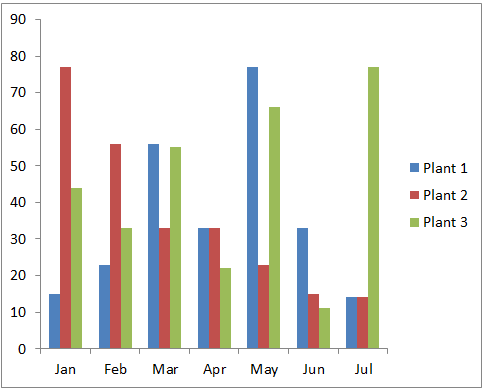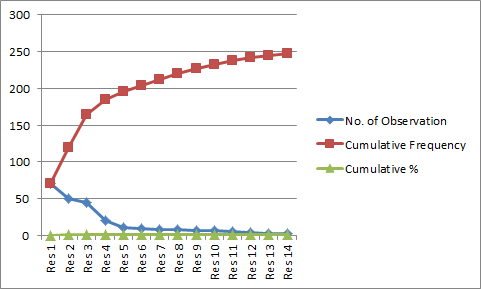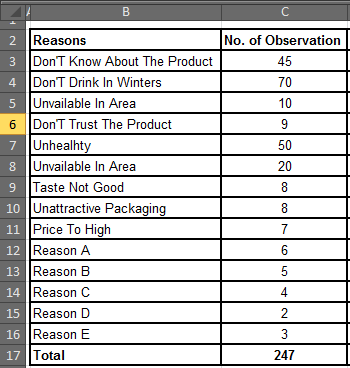

For instance, in the example of the ticketing system from the table above, if teams focused on the top six items (only 1 percent of the total tickets) and made a 50 percent improvement to those six groupings they would reduce the total ticket count by over 30 percent (from 35,000 to 24,000) for future periods.Ī Pareto table is an ideal tool in the Measure and Analyze phases of a Six Sigma DMAIC (Define, Measure, Analyze, Improve, Control) project as it helps teams to quickly ascertain primary drivers. Teams can quickly see which items of focus will bring the most value to the improvement efforts. Once the information is visible in this format, the Pareto table clarifies many mysteries housed in the data. An analyst can perform these steps using any number of spreadsheet tools.
#Pareto chart in excel 2013 using data analysis drivers#
Seven steps are all it takes to complete a Pareto table and get a rapid view of the most compelling drivers of your data. Handpicked Content: Check Imaging Improvements with Lean Six Sigma This is the sum of the individual percentages from the first row in the Pareto table through the current row in the table. Calculate the percent of total tickets each grouping represents. For example, in the case of service desk tickets, the total count of data items is the total count of tickets (34,967) – each of which has a combined category, sub-category and configuration item.Ħ. Sort the pivot table from highest count to lowest.ĥ. Create a pivot table of counts by grouping/ root cause.Ĥ. However, an analyst may wish to combine data elements to reveal more compelling aspects of the data, like the combining of category and sub-category referenced above.ģ. The data may have a field that contains the explicit grouping to analyze.

Identify groupings/root causes to measure. Gather the data from a ticketing system, data warehouse, etc. There are seven steps you need to take to create a pareto table for large data sets.ġ. Pareto Table for Service Desk Ticketing 7 Steps to Creating a Pareto Table The following is a real-world example of a Pareto table, using service desk ticketing data (category names modified for data protection purposes). Analysts can see at a glance which items are the primary drivers and can develop improvement plans to address the most impactful culprits. A Pareto table houses the same data as a Pareto chart but can display several hundreds or even thousands of rows of categories. One easy and highly visible alternative to the Pareto chart is to use a Pareto table. A Pareto chart of this data would not fit on a single page. If they wish to perform a Pareto analysis of all combined categorizations of incidents, they could have several hundred groupings. For each of these tickets, the fix agents will categorize them using a category, sub-category and even a further breakdown of the sub-category.

For example, a service desk may create incident tickets for every incident and call that comes in. A Pareto chart format is not always feasible. With some large data sets, however, there may be a large number of categories or root causes, making the display of these root causes in a chart form difficult. No or little control & tracking.Figure 1: Pareto Chart of Root Causes of Failure for Process X Challenges of a Pareto Chart So how do you make sure that your inventory tracking efforts are optimized so that you waste less time on 50 cent parts & spend more time on costly ones? Some of these parts are very costly (say few thousand dollars per part), while others are cheap (50 cents per part). Each car requires several parts (4,693 to be exact) to assemble. Imagine you are handling inventory at a plant that manufactures high-end super expensive cars. Published on in Charts and Graphs, Learn ExcelĪBC analysis is a popular technique to understand and categorize inventories.


 0 kommentar(er)
0 kommentar(er)
